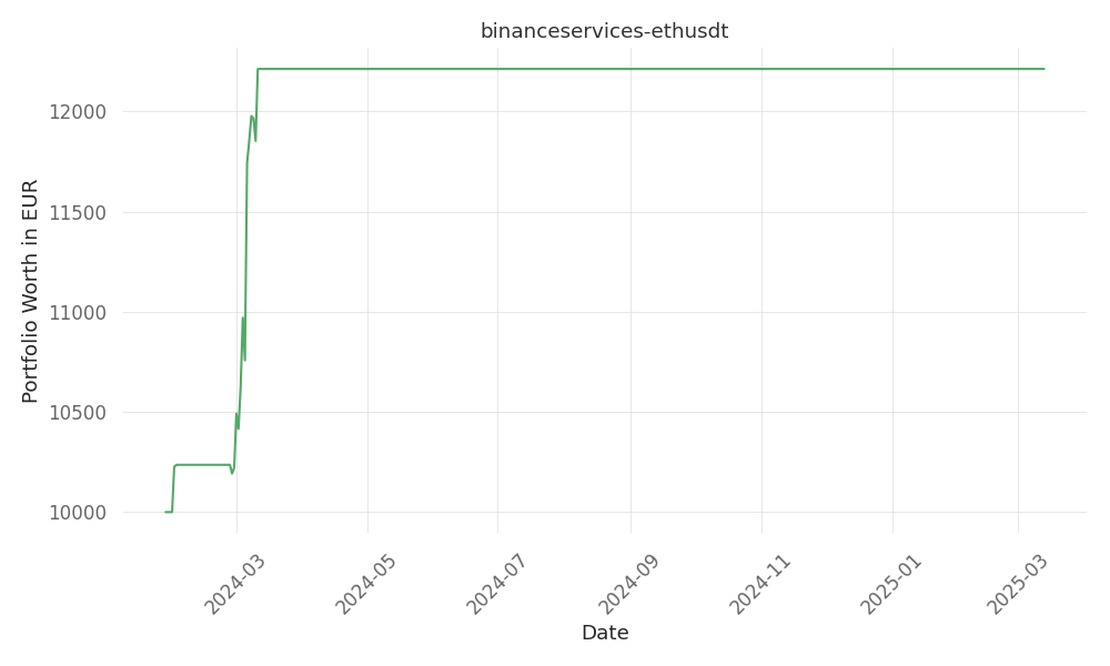
bt_headshoulder_sharpeopt_mixed
Introduction to our strategy no description yet Quick Summary Metric Value Return % p.a. -60 Days active 408 …

source: Cointelegraph
| ticker | polarity | why? |
|---|---|---|
| ETH-USD | positively | The ticker ETH-USD will likely be positively affected as hardware acceleration enhances Ethereum’s transaction processing speeds and reduces latency, making it more competitive and attractive for mainstream adoption and real-world applications, potentially driving up demand and value. Additionally, the focus on energy efficiency and sustainability aligns with growing market preferences, further boosting investor confidence in Ethereum. |
| ASCCF | positively | ASC CF, a company involved in hardware acceleration and purpose-built hardware will see a bnxfrom being associated with Ethereum, as demand increases for scalable blockchain solutions. |
Additionally, investors may be more likely to look for that MIPIRLB alternative solutions and ways to differentiates their projects from traditional Infintexerics ecoystemss fiber optics, making investments in ASCCF more appealing. |
binanceservices-ethusdt , newstrader
Ethereum’s current hardware ramifications Running Ethereum today is akin to attempting to play a modern game on a 1980s laptop. The blockchain’s infrastructure, designed for a simpler era, struggles to process just 10 to 62 transactions per second, far below the thousands needed for mainstream adoption. Meanwhile, competitors like Solana, with sub-second block times and near-zero fees, are gaining traction. The Limitations of Layer-2 Solutions Ethereum’s layer-2 (L2) rollups have alleviated network congestion, but they are stopgap measures. Many L2s are not designed to support real-time applications such as decentralized gaming or cross-border payments. Without addressing these scaling bottlenecks, Ethereum risks falling behind. The Need for Hardware Acceleration The solution lies not just in software updates but in hardware acceleration. Purpose-built hardware, such as application-specific integrated circuits (ASICs), can enhance transaction processing speeds, reduce latency, and optimize energy use. This lays the groundwork for sustainable Ethereum scaling. Ethereum’s Pectra Upgrade Ethereum’s Pectra upgrade, with optimizations like account abstraction and enhanced validator operations, seeks to refine efficiency and user experience. However, it does not significantly increase transaction throughput or reduce network latency, highlighting the urgency for enhanced scalability and stability. Beyond Finance Hardware scaling solutions extend beyond Ethereum. Traditional finance (TradFi) players exploring blockchain-based cross-border payments demand real-time processing. Healthcare and gaming industries also stand to benefit from accelerated blockchain infrastructure, improving security, privacy, and real-time interactions. AI Competitions The rise of AI reshapes industries and poses a competitive challenge. Data centers are prioritizing AI workloads, generating significantly more revenue than Bitcoin mining. Ethereum must embrace purpose-built hardware to address its inefficient infrastructure and enable faster, more energy-efficient transactions. Conclusion Ethereum needs a lasting solution, not another short-term patch. Investing in hardware acceleration is essential for Ethereum to retain its leadership in blockchain innovation and support real-world applications. The future of Ethereum, and its ability to compete with AI and other blockchain networks, depends on hardware optimization.

Introduction to our strategy no description yet Quick Summary Metric Value Return % p.a. -60 Days active 408 …

Introduction to our strategy no description yet Quick Summary Metric Value Return % p.a. -85 Days active 427 …

Introduction to our strategy no description yet Quick Summary Metric Value Return % p.a. 19 Days active 410 …